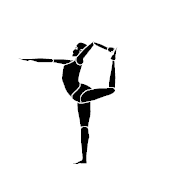When I was in college, courses were divided into three areas of study:
Area 1: Arts and Humanities: Classical Studies, Comparative Literature, Dance, English, Fine Arts, Modern Languages, Music, Philosophy, Religion, Theater and Speech
Area 2: Social Sciences: Anthropology, Economics, Government, History, Psychology, and Sociology
Area 3: Hard Sciences: Biology, Chemistry, Computer Science, Geology, Mathematics, and Physics
Each student chose a major in one area, but was required to take classes in the two other areas. With my computer science major, I was a solid Area 3 student.
Throughout college, I tutored students in computer science. Some students asked a question or two, and then could complete programs on their own. Other students required a lot of help. After a while, I saw a pattern in those asking for assistance.
In general, the Area 3 students understood basic programming fairly quickly, while many Area 1 students struggled. Instead of thinking in a step-by-step way like a computer, the Area 1 students tended to make huge leaps in logic. Though their thought processes were correct, we would spend hours working through the project sequentially.
When I took a college English class, I saw this difference in thinking from the other side. After I turned in my first paper, the professor called me in and asked about my intended area of study. When I replied Area 3, he nodded and said I should stay there because I would never make it as an English major. My paper was too direct and lacked all the niceties of decent writing. I took that as a sign I should not take any more English classes and happily stayed in the sciences after that semester.
I did not write much besides technical papers until I bought this yoga studio. The previous studio owner wrote articles as the first page of our quarterly brochure, and I decided to continue her tradition.
It was a painful process, and I am grateful to Liz Wright, our office manager, who patiently explained transitions, linking sentences together, and how to make words and sentences flow. Writing fifty articles over thirteen years forced me to learn what I had not in school.
In yoga classes now I have noticed similar differences in natural skills. I see a wide range of people each week, and there are a variety of body structures and lifestyles, and different levels of strength and flexibility. Additionally, some people naturally bend forward well, while other peoples’ spines naturally move easily into a backbend or twist.
How someone is built can affect the ease with which they do various poses. For example, some of the advanced backbends require you to reach back over your head to hold a foot that you are lifting behind you.
This pose, Natarajasana, though never easy, is usually more accessible to someone who naturally backbends and has long arms and legs. People with other body proportions can do this pose, but it often requires more effort and practice, since people with shorter limbs need to reach back farther and backbend more.
It would be simple to do as I did in college and just avoid areas of difficulty. Since yoga is voluntary, there is no pressure to attempt poses that are challenging; you can just decide that you do not want to do a pose or a category of poses and move on.
However, like my ability to write, areas we avoid can come back to haunt us. For example, in yoga poses, if you consistently do forward bends and avoid all backbends because you cannot do them well, at a minimum you miss stretching the front of your body and strengthening the back of your body which over time can create imbalances.
It can be interesting to look at the reasons why you do not want to do something. Is there a good reason or is it just too challenging? What is the cost of not doing it? Is it worthwhile to make an attempt?
We cannot excel at everything, but that does not mean that we have to limit ourselves. In many cases, we can take small steps, learning as we go. Who knows, we may surprise ourselves with what we can accomplish.

